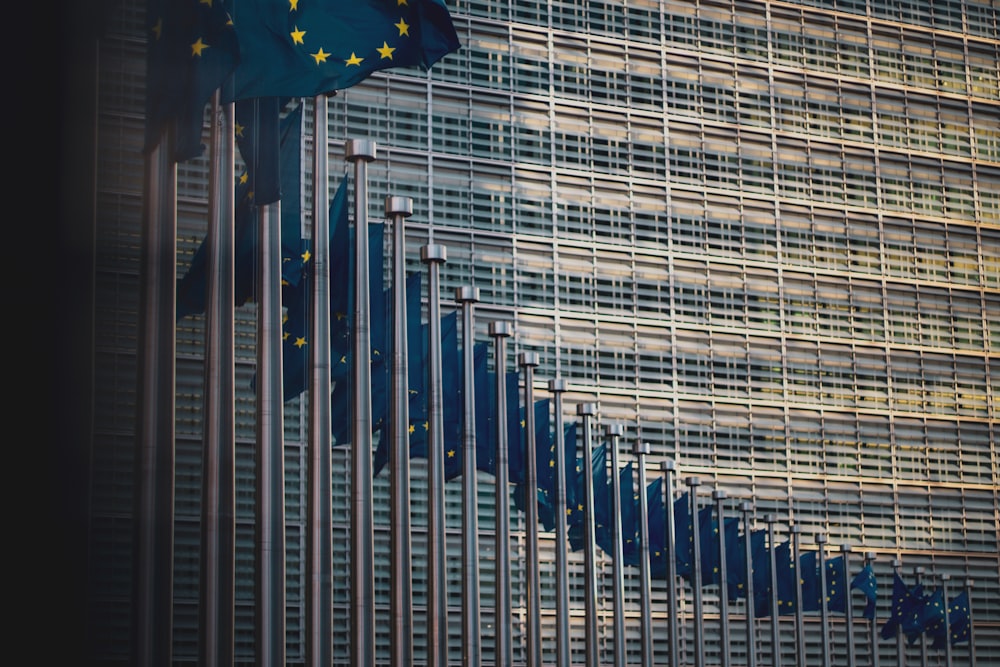EE#17 Bolt-on Wanderings: Brexit, Energy & the TCA
Climate and energy is where the UK and EU have most to gain
Two years from now the UK and EU will undergo a review of the implementation of the Trade and Cooperation Agreement (the final Brexit text). Thrilling I know. 2023 was a year of progress. There was agreement on the UK rejoining the EU’s science programme, Horizon; there’s been strong cooperation over Ukraine; the Windsor agreement paved the way for cooperation on financial services; and we had an MoU on the North Sea.
On a personal level, Sunak has a good relationship with Commission President Ursula von der Leyen. While the likely Prime Minister for the TCA’s review, Keir Starmer, spent much of 2023 on a charm offensive with European Leaders. There is very little interest in reopening the TCA. But recent progress and goodwill has increased the possibility of bigger and better bolt-ons. The government hopes to build on an initial deal on border cooperation, whilst Labour is promising a full security and foreign affairs deal.
Now climate and energy has for the EU, America and others become the economic policy of the 2020s. The scope for side deals is narrow given its deep entanglement with the single market. But the EU does seem more open than a few years ago, principally driven by concern over increasing American and Chinese production. Working with the UK could make it easier to build its own capabilities. As a starter for 10, here are some of the areas the UK might want to propose for a green bolt-on to the TCA.
Electric Vehicles
Although Sunak has watered down the UK’s electric vehicle targets, UK automotive manufacturers are still proceeding at pace. Under the Trade and Cooperation Agreement between EVs and batteries were supposed to be subject to escalating rules of origin requirements (the percentage made in the UK and EU). At the end of 2023, both parties agreed to keep in place the initial requirements, keeping tariffs down until the end of 2026.
This allows both UK and EU battery manufacturing plans to catch up from Covid-induced delays. Most UK vehicle production goes to the EU, but German automakers were also keen to keep the UK market open to their high-end EVs, so both sides are somewhat happy. However, it still leaves a cliff-edge in 2027, that, for example, the French, argue means re-opening the Brexit agreement to solve.
In the interim to increase cooperation, the UK could offer to join and support the recently announced Commission anti-dumping investigation into Chinese electric vehicles. With the Labour Party’s ambitious plans (to say the least) for UK battery manufacturing, this may also help persuade the EU of a lower risk of domestic content requirements.
Carbon Pricing
When the UK left the EU, we also left the EU Emissions Trading Scheme (EU ETS). The UK government responded by setting up its own, the UK ETS, however, the UK is smaller which means fewer businesses and fewer buyers. After concerns over high prices, government increased free allowances faster than previously planned dropping the UK carbon price. Although part of the falling carbon price is also about the market’s decreasing confidence in the UK.
The EU carbon price is now over double the UK’s, which exposes UK exporters to the EU’s planned carbon border levy (CBAM). This is the case not just for carbon-intensive industries, but also for renewable generators who feed into electricity exports and are indistinguishable at the border from fossil fuel generators. The UK has promised its own CBAM from 2027 but with no details of scope, method or pricing.
As Sam Lowe and James Low show, the only route for the UK to avoid the EU CBAM entirely is being in or fully linking with the EU ETS (essentially adopting its carbon price). Even with level prices, there is a cost of administration. Thankfully, the current UK-EU Trade and Cooperation Agreement (TCA) hints heavily towards linkage. The prize of greater cooperation is a more effective market and more efficient use of allocations for both. The potential gain for the UK is greater - avoiding the tariff, whilst receiving additional revenue from the ETS. However, linking at divergent prices will be challenging, and could mean sharp increases for UK producers, though they’ll get those with the CBAM anyway. The UK will also need to bridge its divergence over how it incorporates maritime emissions.
The UK’s domestic politics are challenging. Already the Conservatives are trying to weaponize both Labour’s closeness to Europe, and that its green capital investment promises could have tax implications. Labour is nervous about any public policy change regarding tax or borrowing. There are also challenges over a potential expansion to road transport and buildings. Don’t forget of course the EU ETS is also overseen by the European Courts.
Critical Raw Materials
Europe wants to increase its material sovereignty. The Critical Raw Materials Act includes a ten per cent target for sourcing critical minerals, central to batteries, chips and renewable technology, from the EU. However, according to analysis by Allianz the EU still remains 94 per cent reliant on third countries for its raw materials, and only 21 out of 24 materials pass the looming threshold of 40 per cent refining in the EU. The bloc also hopes to meet 15 per cent of its consumption through re-use and recycling, but these ambitious targets came with little funding.
The UK has none of these targets, and its own raw materials strategy barely mentions cooperation with the EU except where both the UK and Europe happen to be part of a wider group of countries like the Minerals Security Partnership. Now the UK isn’t going to solve Europe’s targets on its own. There are promising deposits of lithium in old Cornish tin mines, but this is one of the less worrying minerals for the Commission. The UK likely has more to benefit, as its efforts to recycle are behind Europe’s. For the near term, we will probably export a lot of our e-waste, with (customs union participant) Turkey as a top destination.
Europe’s more protectionist approach comes from its greater economic clout and manufacturing base. While the UK has a supply chain agreement with Australia, EU-Aus plans are wrapped in wider FTA negotiations with minerals a key bargaining chip for Albanese’s government. I think this is the most challenging, given its connection to the EU’s industrial strategy and greater benefit to the UK
Anything else?
Mutual recognition of qualifications of key renewable job roles, like electrical engineers, and facilitating their movement (we’ll talk more about net zero and migration soon). This shouldn’t be hard given most UK offshore wind is built by EU companies
Formalise agreement on future interconnectors or sit in on the North Seas Energy Cooperation body. This latter policy will need some fudging from the Commission to allow the UK to play a bigger role.
Implementing Electricity Trading Arrangements faster. This is in the TCA but very much in the UK’s interest, currently costing a few million a year but a long-term handbrake on offshore wind plans.
Yeh but will it happen
The issue here as always is that although some of this is easy, and low-hanging fruit, the Commission knows the UK wants to cooperate more on climate and energy. What energy types, and likely the UK government, don’t want is for that to get held up by arguments or agreements in other areas - why it took so long to join Horizon. Some such as the CER suggest this could all be a step towards joining the energy single market. That sounds like a nightmare, as a new government I’d be trying to solve as many of these issues quickly and quietly, exactly so that they don’t become major political issues or EU bargaining chips. Particularly for the Labour Party, I’m not sure it’s sunk in how much of its 2030 clean power ambitions are contingent on better trade with Europe. Worth spending some time in before TCA rears its head again.
Thanks to Adam Berman for comments on an early draft and to Sean de Montfort for a steer on pricing.





